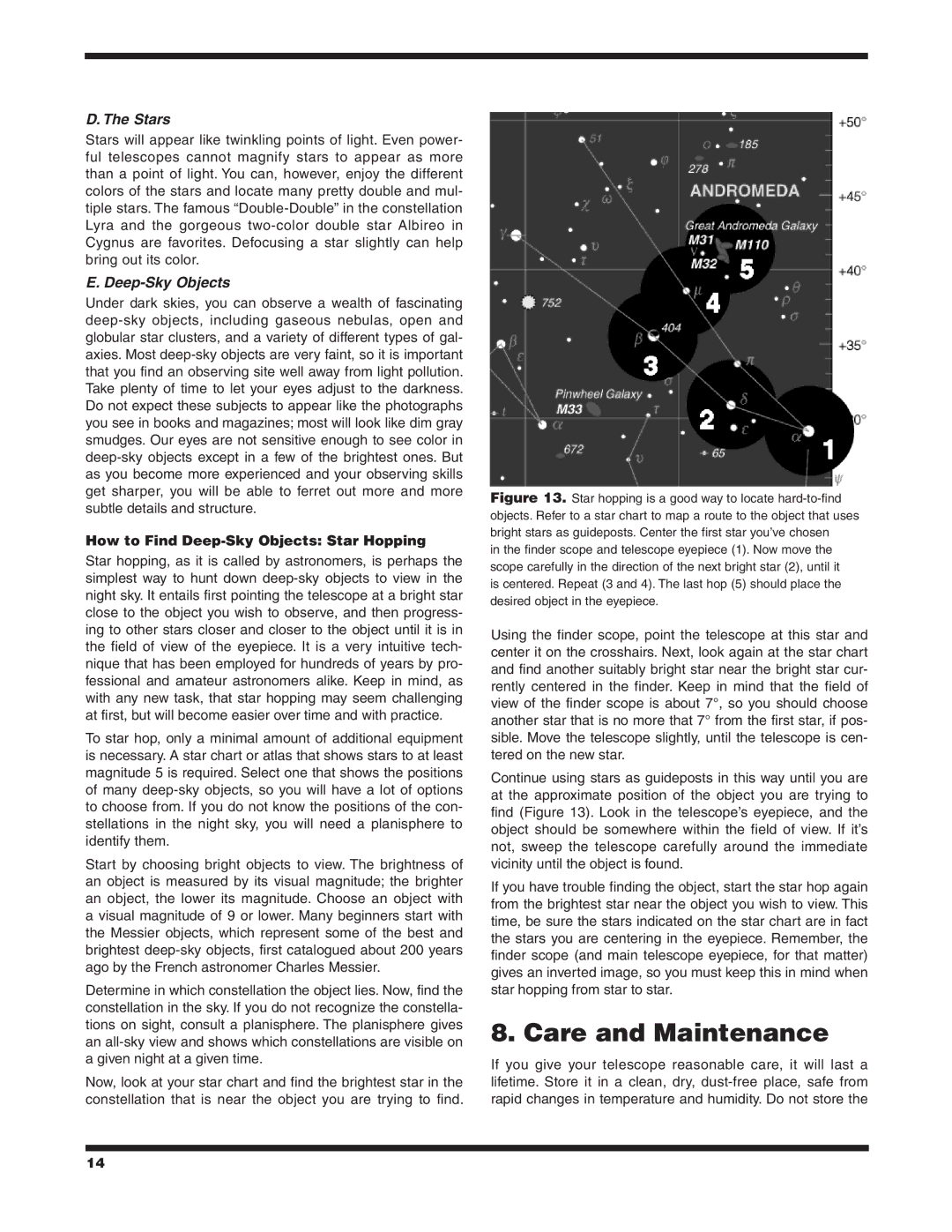
D. The Stars
Stars will appear like twinkling points of light. Even power- ful telescopes cannot magnify stars to appear as more than a point of light. You can, however, enjoy the different colors of the stars and locate many pretty double and mul- tiple stars. The famous
E. Deep-Sky Objects
Under dark skies, you can observe a wealth of fascinating
How to Find Deep-Sky Objects: Star Hopping
Star hopping, as it is called by astronomers, is perhaps the simplest way to hunt down
To star hop, only a minimal amount of additional equipment is necessary. A star chart or atlas that shows stars to at least magnitude 5 is required. Select one that shows the positions of many
Start by choosing bright objects to view. The brightness of an object is measured by its visual magnitude; the brighter an object, the lower its magnitude. Choose an object with a visual magnitude of 9 or lower. Many beginners start with the Messier objects, which represent some of the best and brightest
Determine in which constellation the object lies. Now, find the constellation in the sky. If you do not recognize the constella- tions on sight, consult a planisphere. The planisphere gives an
Now, look at your star chart and find the brightest star in the constellation that is near the object you are trying to find.
Figure 13. Star hopping is a good way to locate hard-to-find objects. Refer to a star chart to map a route to the object that uses bright stars as guideposts. Center the first star you’ve chosen
in the finder scope and telescope eyepiece (1). Now move the scope carefully in the direction of the next bright star (2), until it is centered. Repeat (3 and 4). The last hop (5) should place the desired object in the eyepiece.
Using the finder scope, point the telescope at this star and center it on the crosshairs. Next, look again at the star chart and find another suitably bright star near the bright star cur- rently centered in the finder. Keep in mind that the field of view of the finder scope is about 7°, so you should choose another star that is no more that 7° from the first star, if pos- sible. Move the telescope slightly, until the telescope is cen- tered on the new star.
Continue using stars as guideposts in this way until you are at the approximate position of the object you are trying to find (Figure 13). Look in the telescope’s eyepiece, and the object should be somewhere within the field of view. If it’s not, sweep the telescope carefully around the immediate vicinity until the object is found.
If you have trouble finding the object, start the star hop again from the brightest star near the object you wish to view. This time, be sure the stars indicated on the star chart are in fact the stars you are centering in the eyepiece. Remember, the finder scope (and main telescope eyepiece, for that matter) gives an inverted image, so you must keep this in mind when star hopping from star to star.
8. Care and Maintenance
If you give your telescope reasonable care, it will last a lifetime. Store it in a clean, dry,
14
